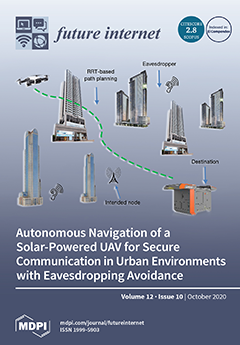The increasing worldwide energy demand, the CO
2 emissions generated due to the production and use of energy, climate change, and the depletion of natural resources are important concerns that require new solutions for energy generation and management. In order to ensure energy
[...] Read more.
The increasing worldwide energy demand, the CO
2 emissions generated due to the production and use of energy, climate change, and the depletion of natural resources are important concerns that require new solutions for energy generation and management. In order to ensure energy sustainability, measures, including the use of renewable energy sources, the deployment of adaptive energy consumption schemes, and consumer participation, are currently envisioned as feasible alternatives. Accordingly, this paper presents the requirements and algorithmic solutions for efficient management of energy consumption, which aims to optimize the use of available energy, whether or not it is 100% renewable, by minimizing the waste of energy. The proposal works within a Demand-Response environment, uses Network Functions Virtualization as an enabling technology, and leverages the massive connectivity of the Internet of Things provided by modern communications technologies. The energy consumption optimization problem is formulated as an Integer Linear Program. It is optimally solved while using a brute-force search strategy, defined as O
ptT
s, to detect all concerns that are related to the problem. Given the
-hard nature of the problem and the non-polynomial complexity of O
ptT
s, some heuristic solutions are analyzed. Subsequently, a heuristic strategy, described as F
astT
s based on a pre-partitioning method, is implemented. The simulation results validate our proposed energy management solution. Exact and heuristic strategies, when deployed in the Network Functions Virtualization domain, demonstrate improvements in the way that energy is consumed, thereby offering an increase in service processing. The evaluation results also show that F
astT
s produces high-quality solutions that are close to those of O
ptT
s while executing 230×–5000× faster.
Full article





